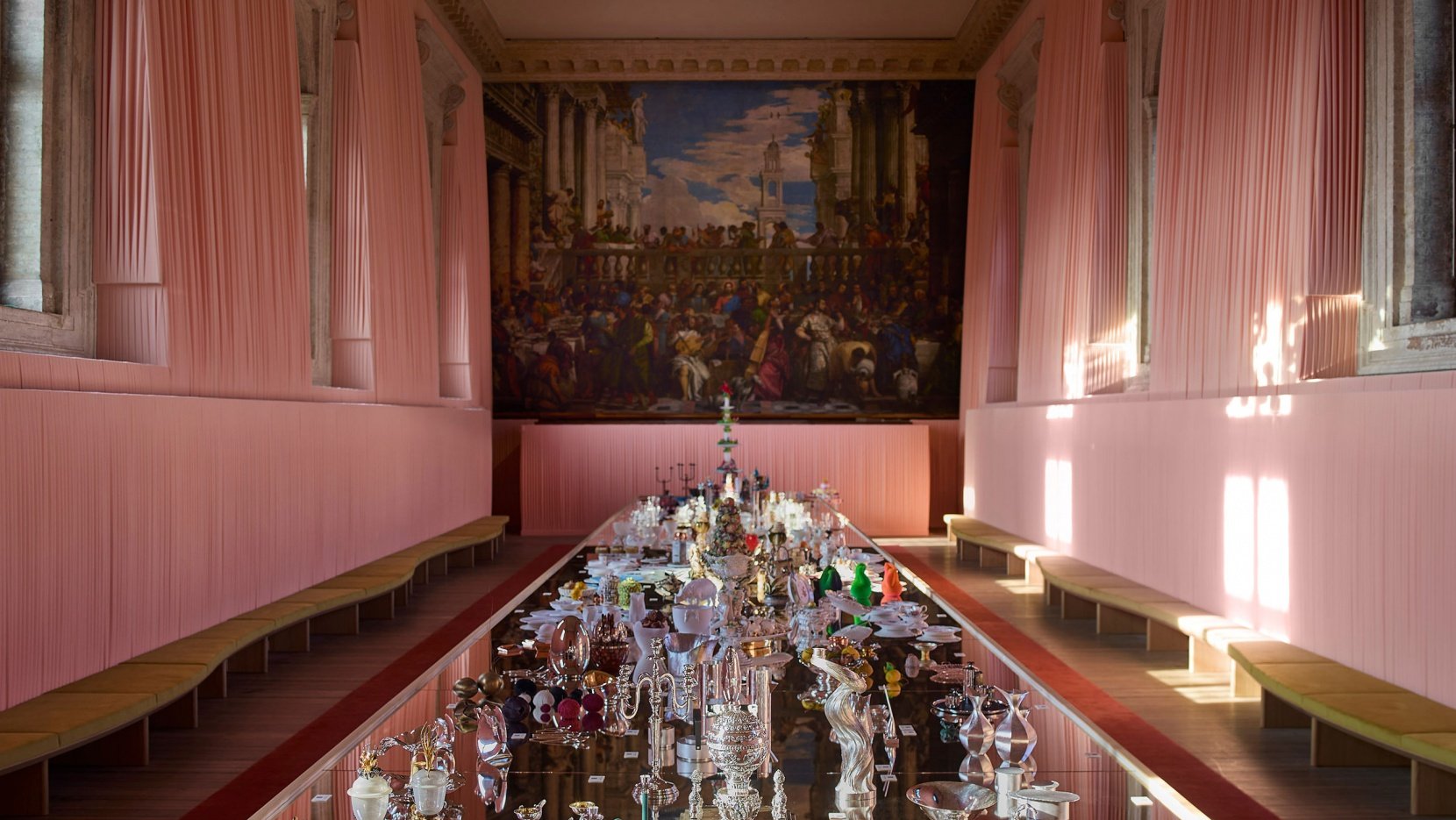Nestled on one of Venice’s most serene, secluded islands, the 16th-century San Giorgio Monastery stands worlds apart from the modernist Palazzo del Cinema on the lively Lido, the main venue of the Venice Film Festival. This year however sees these two seemingly disparate worlds artfully connected through the vision of acclaimed film director Luca Guadagnino whose striking scenography sets the stage for the third edition of Homo Faber, the biennial celebration of contemporary craftsmanship at the San Giorgio Monastery (now the home of the Fondazione Giorgio Cini).
Organized by the Geneva-based Michelangelo Foundation for Creativity & Craftsmanship, the exhibition (running from September 1–30, 2024) unfolds across 11 themed chapters charting “The Journey of Life,” a concept envisioned by the Foundation’s Vice-Chair Hanneli Rupert and evocatively brough to life by Guadagnino, an accomplished interior designer as well as filmmaker, and Milanese architect Nicolò Rosmarini, the project manager of his eponymous interior design studio. From Birth to Afterlife, and through stages such as Childhood, Love and Dreams, visitors embark on journey that spans the full spectrum of the human experience underpinned by a wondrous, atmospheric energy that mirrors the visual richness of Guadagnino’s cinematic style—serendipitously on display across the lagoon with the premiere of his latest film, Queer, during the Venice Film Festival.
Showcasing over 800 handcrafted objects created by around 400 artisans and studios from 75 countries, a significant change from the previous editions that focused on Europe, the exhibition’s curation was certainly no easy task for Alberto Cavalli, Executive Director of the Michelangelo Foundation, with the The Journey of Life theme both guiding and complicating the process. Despite the diversity in concepts, techniques, styles and settings, which range from a 16th century refectory to a 1960s indoor swimming pool, there is a cohesive narrative running through the exhibition thanks to Guadagnino and Rosmarini’s art direction, and particularly a vibrant colour palette coupled with recurring motifs such as mirrors and pleated fabrics—the latter used to wrap up entire rooms as a nod to Venetian-born designer Carlo Scarpa. Striking elements like a pair towering 12-metre papier-mâché cypress trees, a forest of high-tech chandeliers and a sinuous 3D-printed pink ribbon sculpture weaving its way around the columns of one of the cloisters, further underscore the scenographers’ zany theatricality, imbuing the historic spaces with a sense of joviality and wonder.
